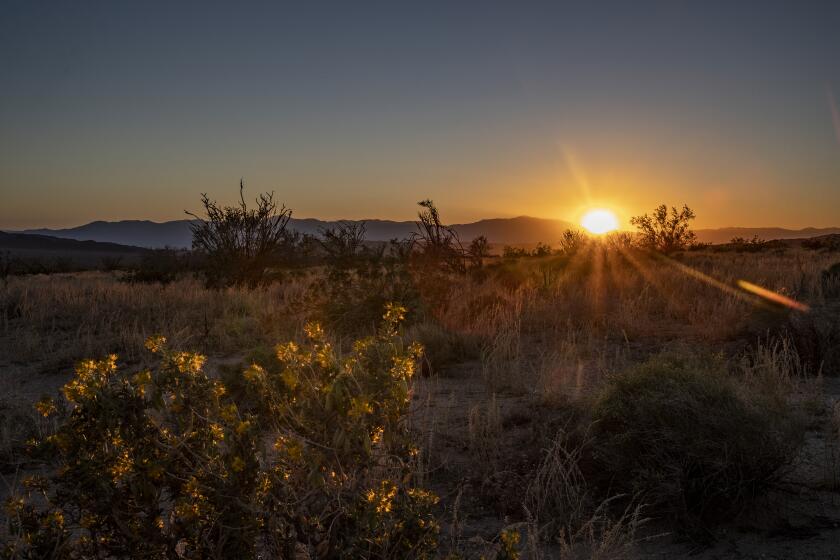Guide to Southern California’s most common wildflowers
- Share via
Cue the wildflowers. With different microclimates and habitats in Southern California, it’s tricky to predict where and when native plants will sprout. Much-needed winter rains on which native plants rely didn’t materialize this month. Still, even in a so-so year, flower watchers should be able to see spring colors in patches instead of last year’s magical carpets.
As you head out to the deserts or mountains, you should be able to find these plants and shrubs. And remember: Don’t pick the flowers or trample them when you take photos.
Desert flowers
Dune evening primrose
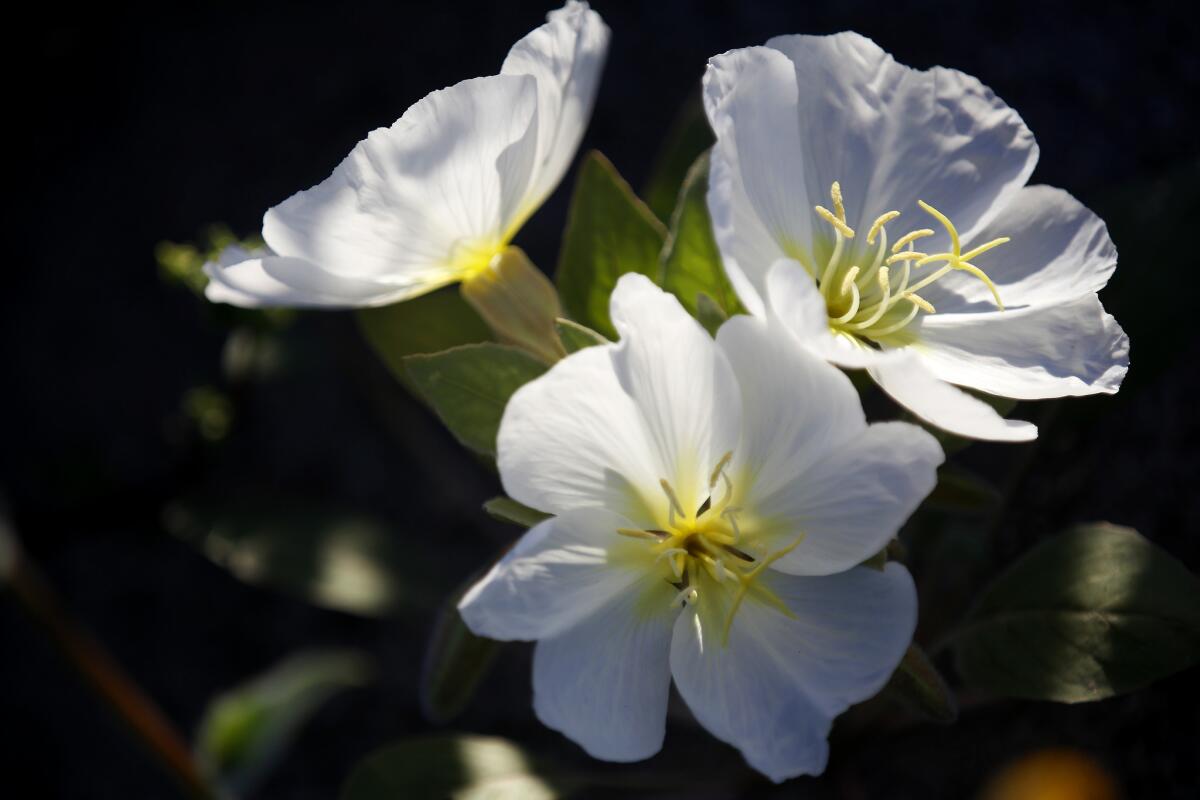
These flowers usually are seen in the foreground of those dreamy desert photos, likely because their large white petals contrast nicely with the surrounding muted tones. As they age, the petals take on a pinkish hue. The trick is to catch the flowers when they’re open: They bloom in the evening (as the name suggests) and last through mid-morning.
Desert dandelion
These plants aren’t the suburban scourge that messes up your lawn. In the desert, dandelions, which have a small red dot in the center, are less showy and more delicate. They bring waves of yellow to desert washes and canyons in a good year. Expect to find patches alongside trails even in a mediocre season.
Desert lily

These lilies are a desert surprise. Until they bloom, all you see are crinkled gray-green leaves hugging the desert floor. In bloom, several trumpet-shaped flowers burst from a single stalk. Good place to look: the Desert Lily Sanctuary in the Mojave Desert along California 177.
Sand verbena
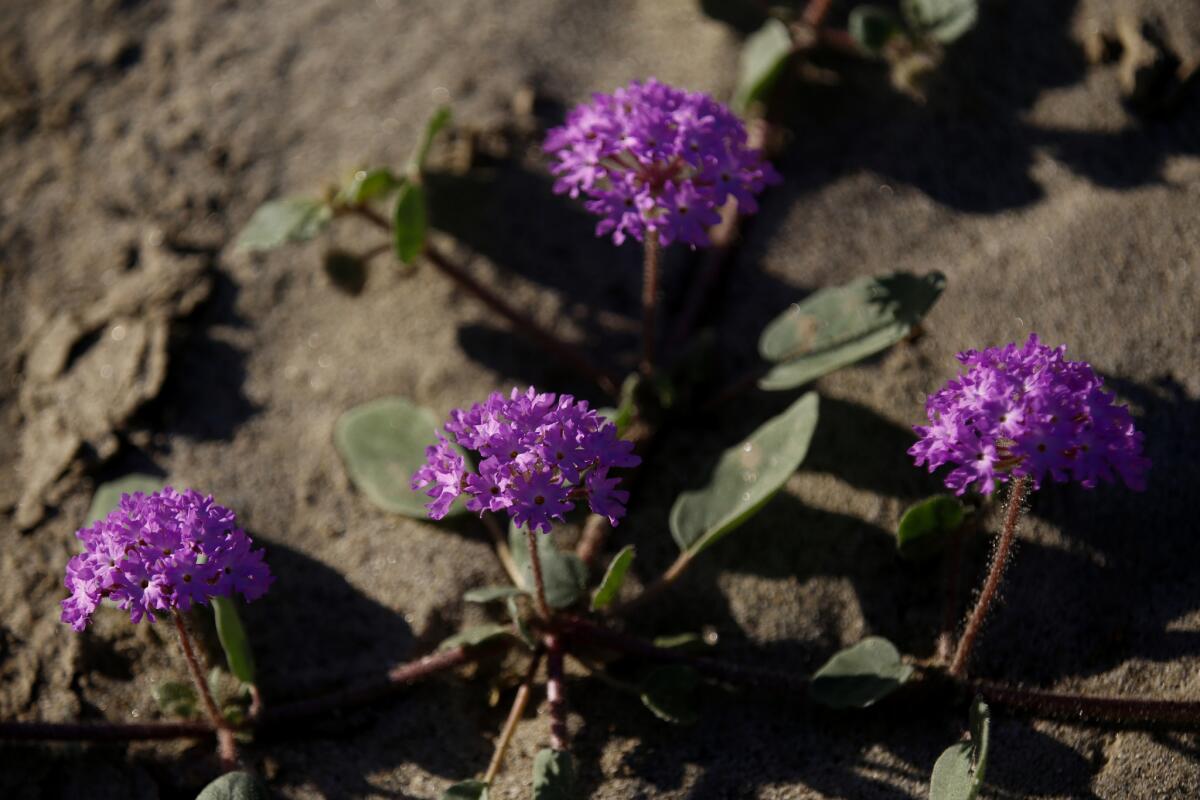
Verbena has bright pink-purplish flowers clustered at the end of long stems that seem to creep along the ground. They’re easy to spot on sandy flats at low elevation, usually next to dune evening primroses.
Cactus
Cactus flowers come in various colors. See how many you can find: yellowish-green flowers on barrel cactus; deep pink on hedgehog and beavertail; and off-white flowers with yellow centers on fishhook cactus. The large, waxy flowers are irresistible, so keep your camera close. Best place to see them: the Cactus Loop Trail, less than a mile long, at Anza-Borrego Desert State Park.
Joshua tree

These yuccas grow only in the Mojave Desert and are best known for their strange spiky-limbed appearance — as well as a namesake national park and early U2 album. Although their branches appear inhospitable, Joshua trees sprout with glorious creamy white cones. You’ll find them at the park and on easy trails in Arthur B. Ripley Desert Woodland State Park near Lancaster.
In a dry winter, wildflowers might be visible only up close. But the delights of the Palm Springs area blossom even when flowers don’t.
L.A. Basin, forests and mountains
California poppy
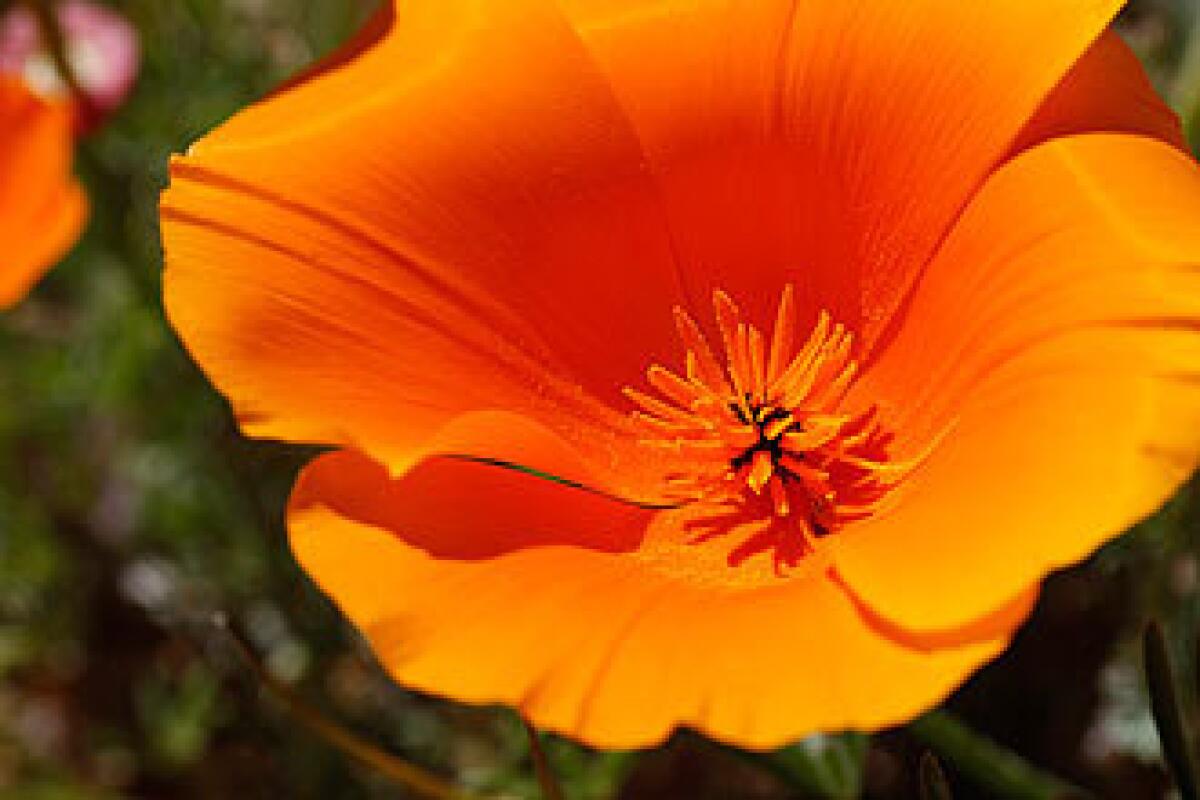
Poppies are beloved in California, and with good reason. In good years the carpets of orange can be epic; last year the superbloom explosion north of L.A. could be seen in satellite photos. The poppy has been the state flower since 1903 and claims its very own California Poppy Day (April 6). But poppies can be fussy: They don’t open on cloudy or overcast days. Take the trails (one is wheelchair accessible) at the Antelope Valley California Poppy Reserve near Lancaster to see some.
Lupine
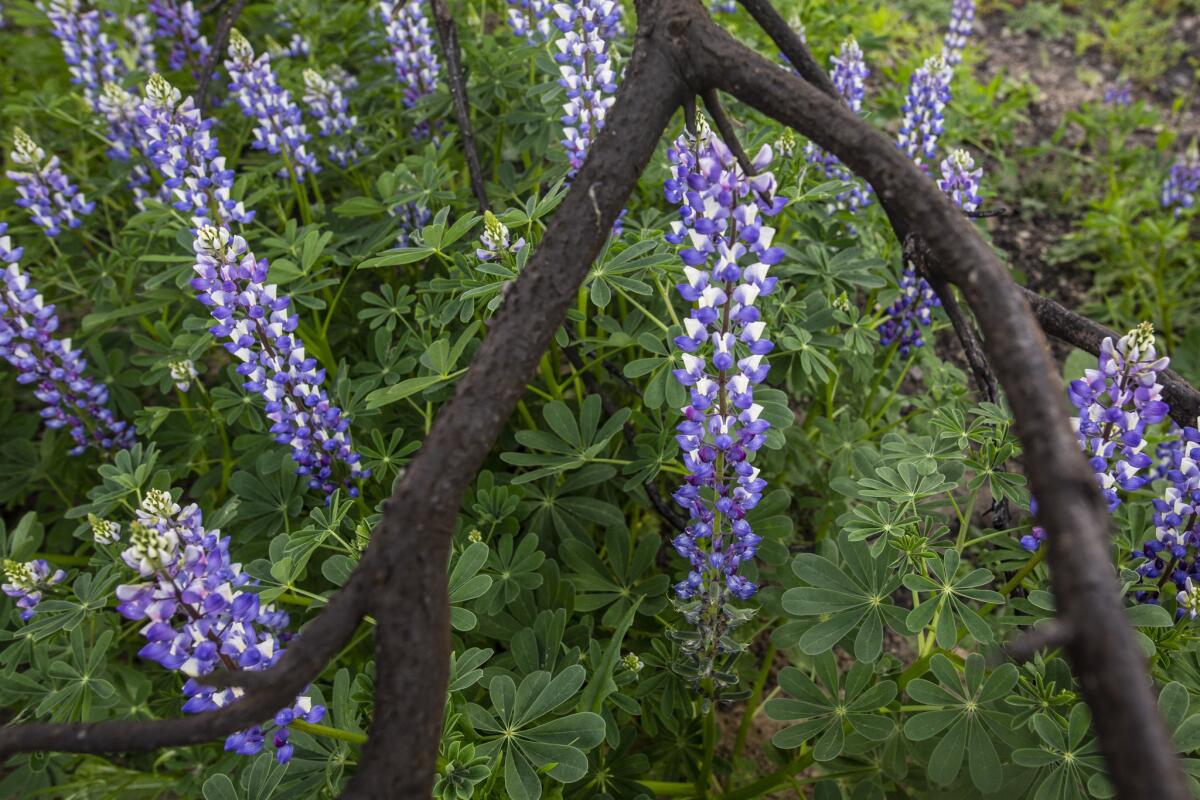
These bushy plants have tall purplish-blue cones flecked with white. Some varieties, such as stinging lupine, are bright pink. They’re easy to spot on trails in the Santa Monica Mountains, where about a dozen species thrive. Look for their broad leaves that look like outstretched hands. You also may see them along Southern California highways where water collects at the edge of the road.
Monkey flower
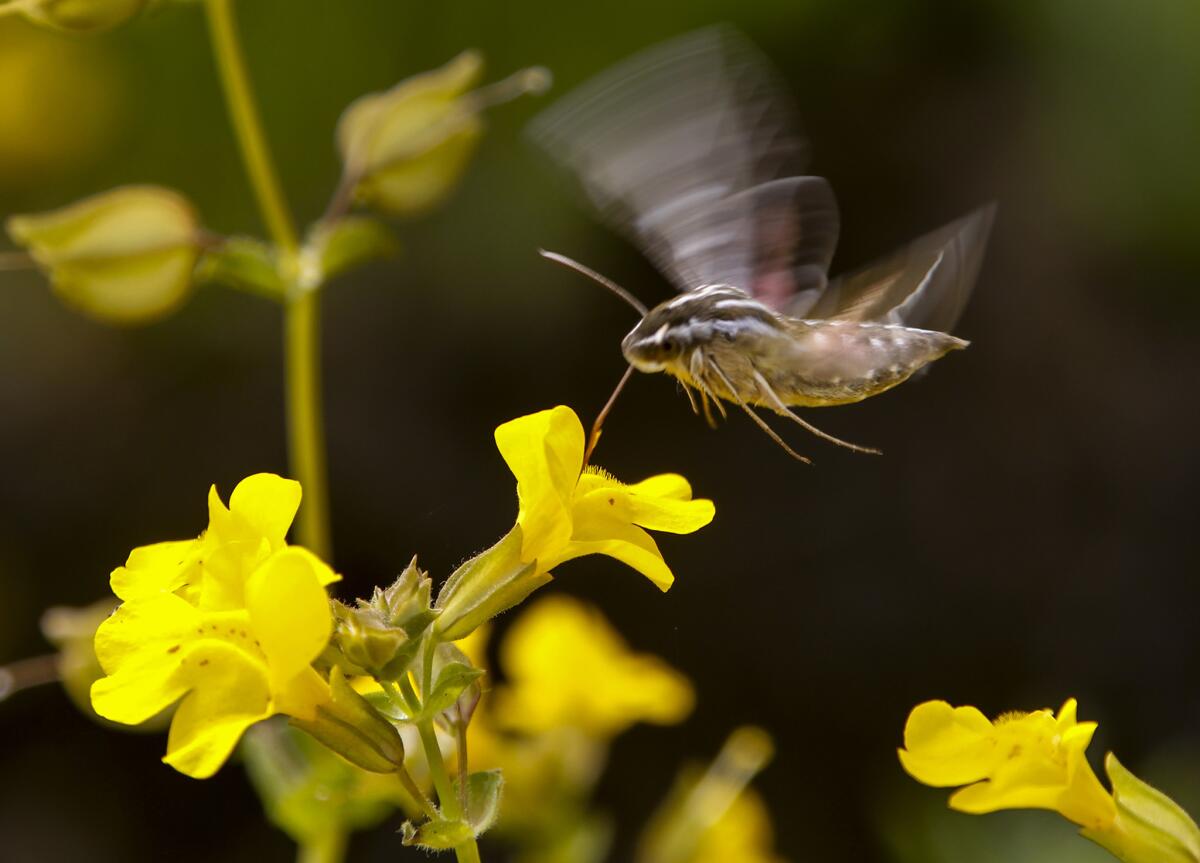
Sticky monkey flowers sometimes cover the hillsides in the mountains and national forests that surround L.A. These wide-mouthed blooms have creamy orange faces surrounded by sword-shaped deep green leaves. Look for scarlet versions around streams and seeps.
Mariposa lily
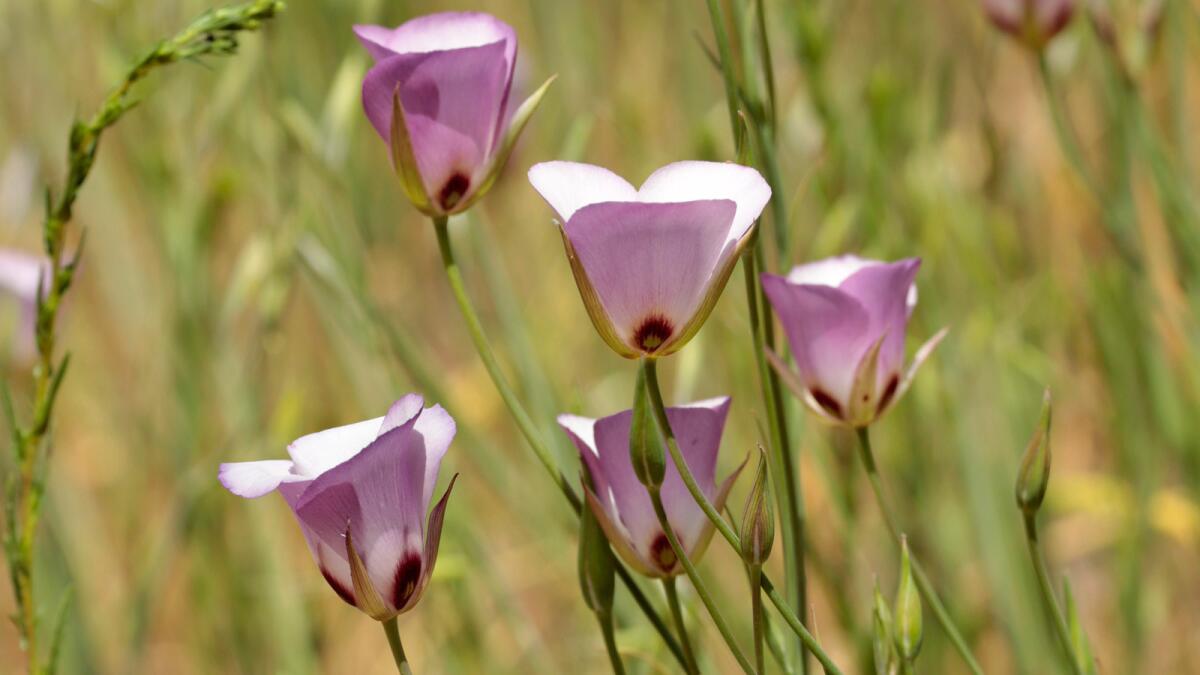
These slender-stemmed beauties are sometimes found hiding in tall grasses. The name suggests a butterfly (mariposa in Spanish) for the way the flower looks when it flutters in the wind. They can be white to pale lilac, with reddish blotches in the center.
Matilija poppies
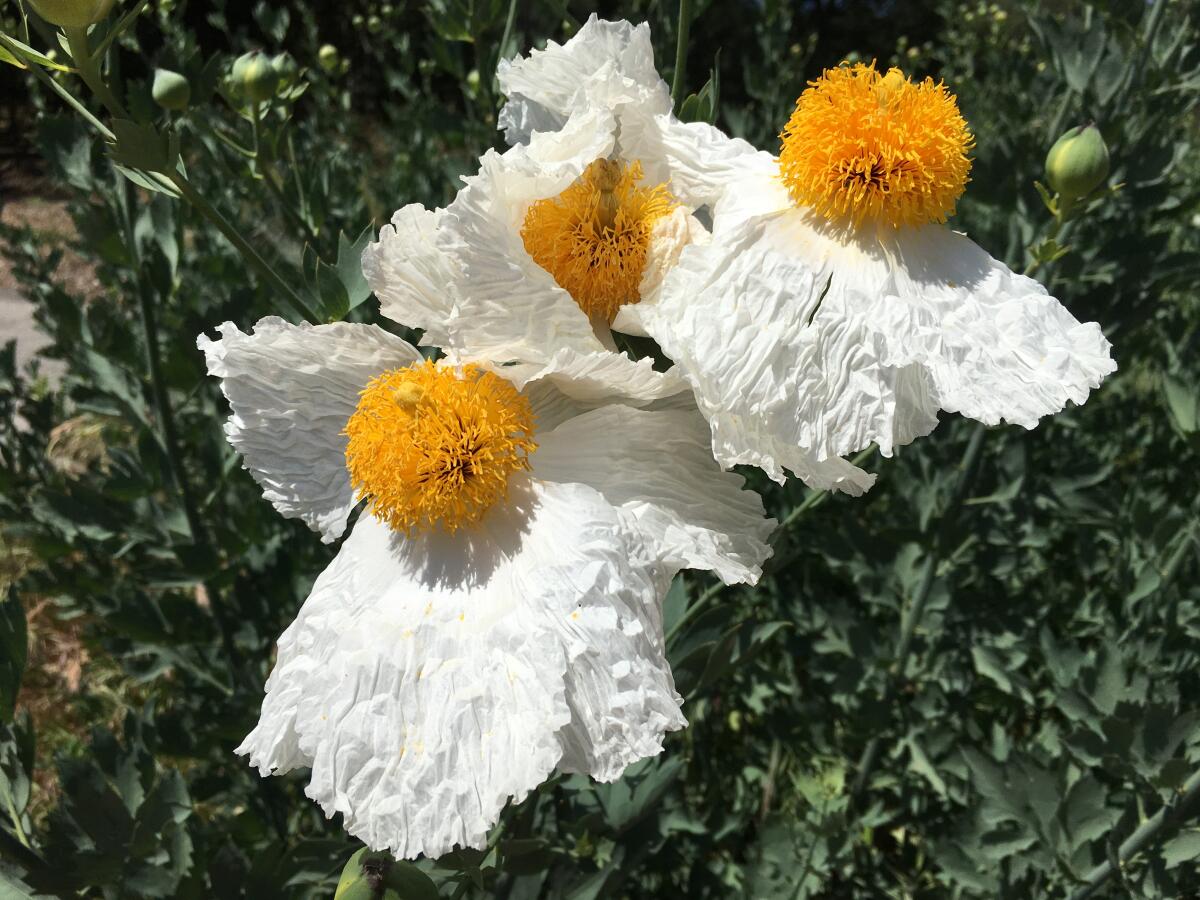
Some flower lovers call this plant the “queen of the California wildflowers.” They have tall stalks (which can be head-high) with flowers that look as if they were made of crepe paper and yellow pompoms. These plants love dry, sandy locations and sometimes appear in urban areas.
Indian paintbrush
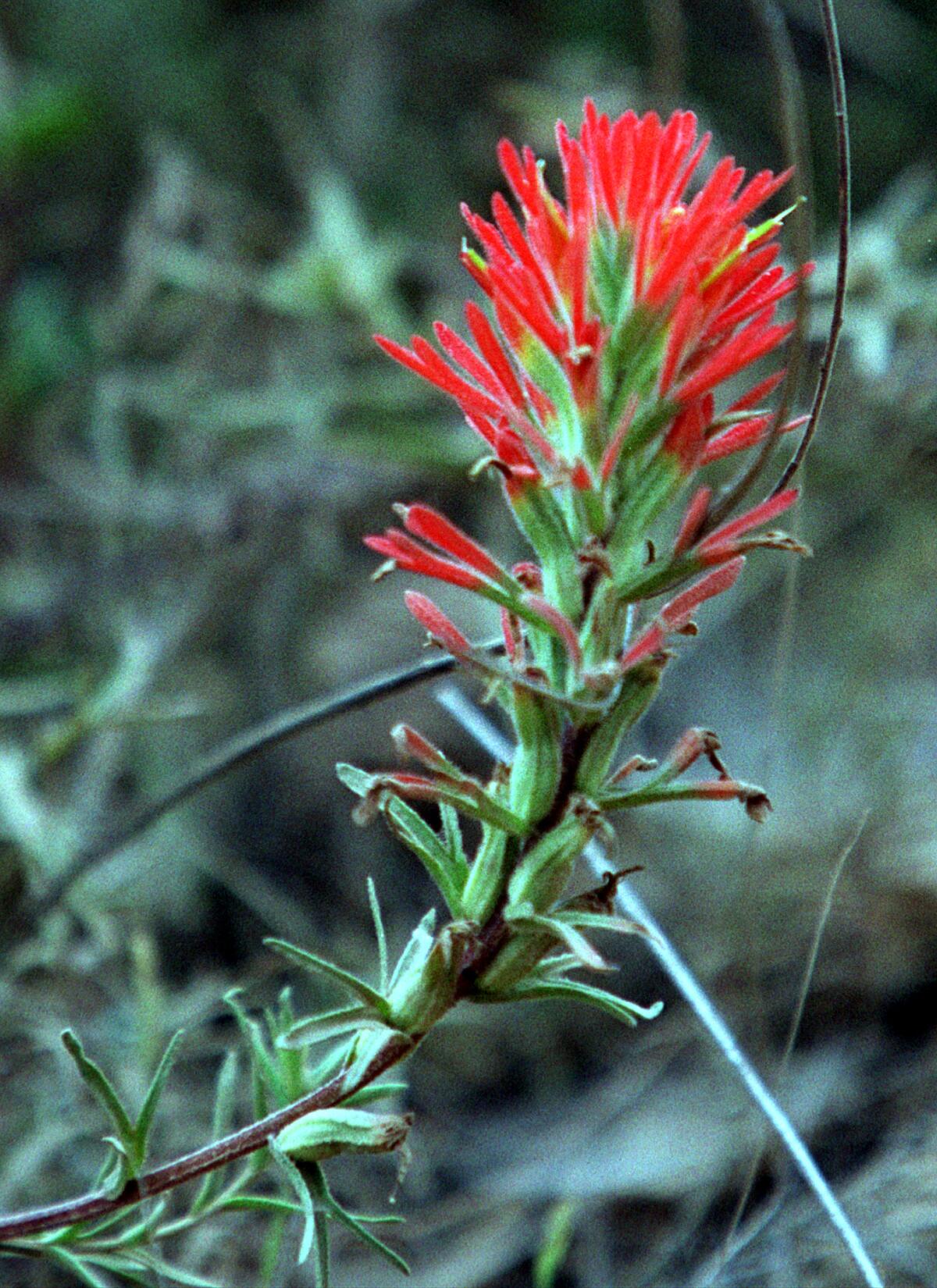
Few native plants are as bright red as paintbrush. There are about 20 species in Southern California, with the same bushy structure showing scarlet to orange flowers.
Sage
You may smell sage shrubs before you see them. Black sage blooms with stacks of white flowers, and white sage bursts forth with purple stacks. Sound confusing? No matter, you’re bound to see both on trails in coastal and low-elevation chaparral habitats. Rub the leaves between your fingers to release the intoxicating scent.
Ceanothus
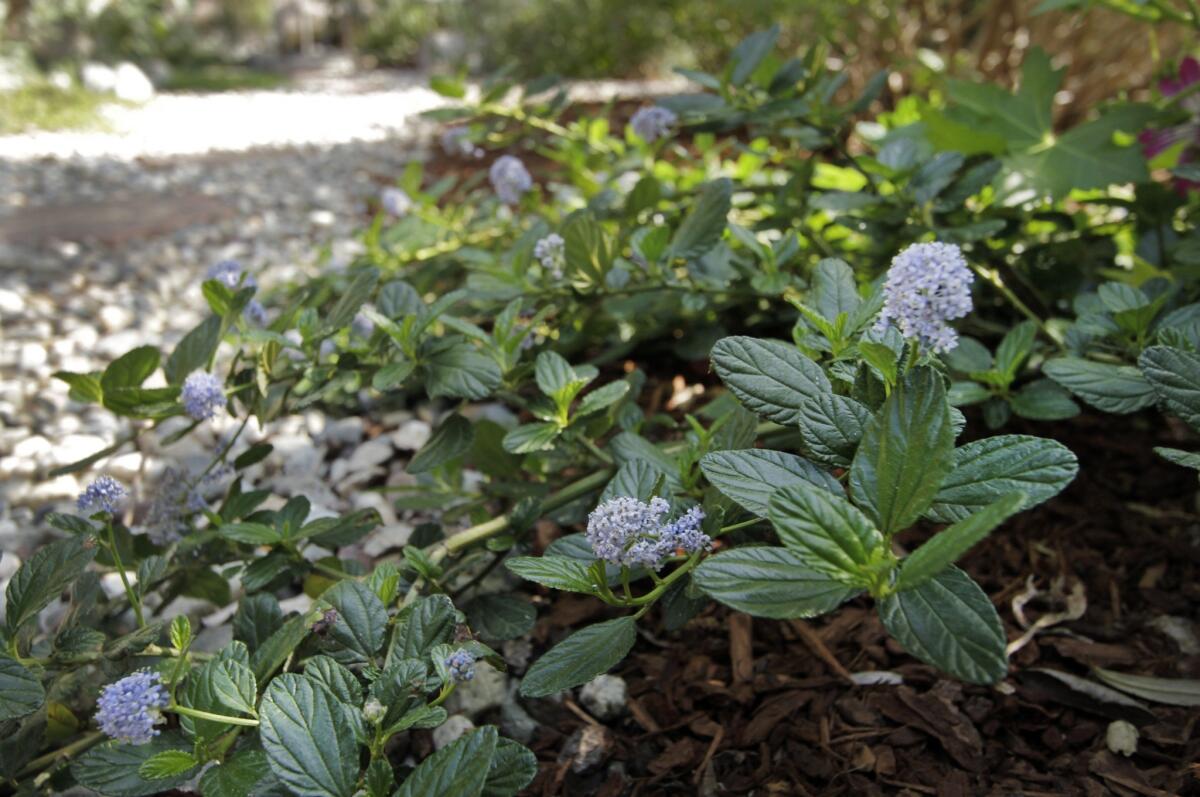
These tree/shrubs, a.k.a. California lilac, usually bloom in early spring. Big-pod ceanothus shows tight white blooms, which leave trails of “snow” as the flowers wane. Other varieties, some with a purplish-blue flower, bloom later. These trees add a faint but sweet scent to the air.
Buckwheat
This native plant covers slopes in what look like pinkish balls that eventually turn white. When tightly packed, the plants create a beautiful cottony effect. You’ll find different varieties in the mountains and desert. Spent plants turn a lovely rust color late in the season.
Bush sunflower
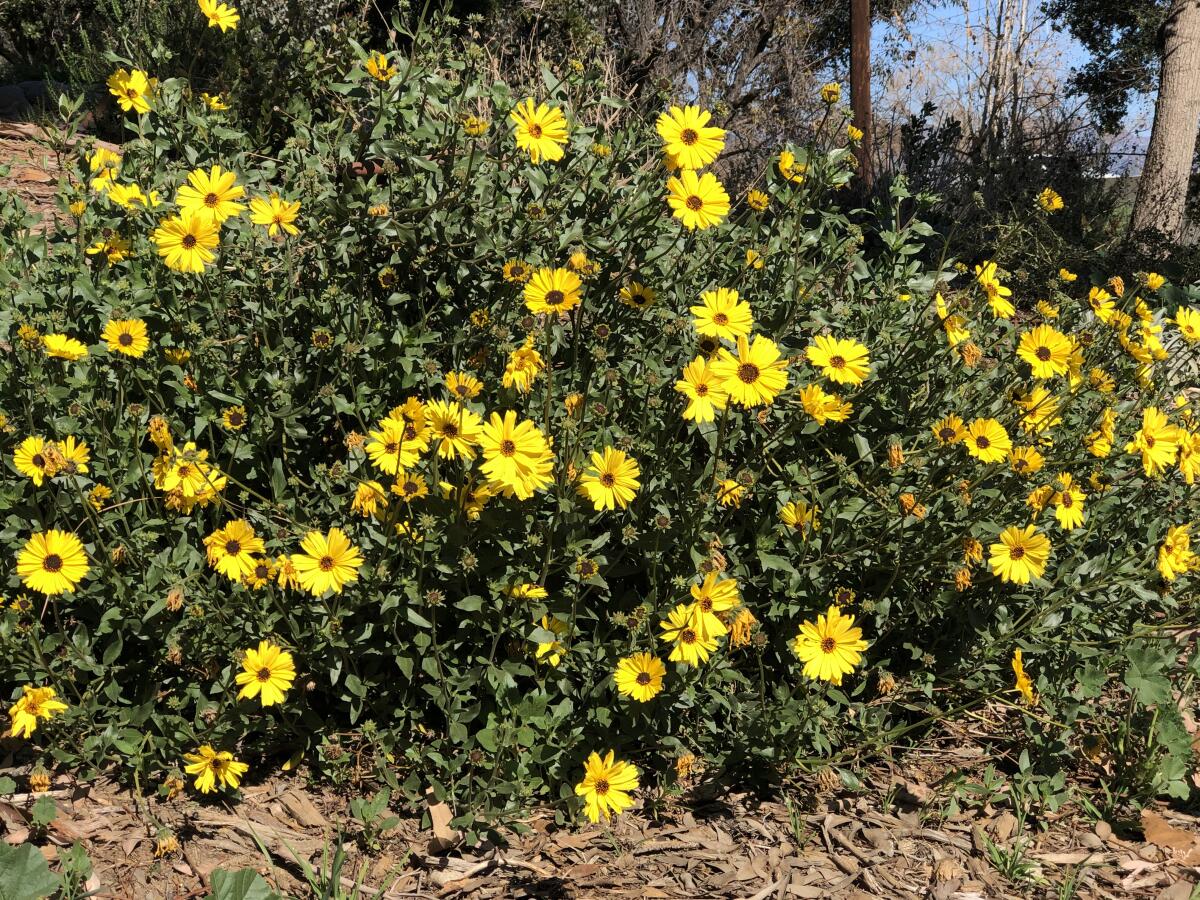
Native sunflowers in Southern California are more diminutive than the huge single stalks that grow elsewhere in the country. These are bushy with yellow heads and black centers, and they bloom from the coast to the mountains and forests. You’ll find them flowering now at your local park or open space.
Griffith Park and the Santa Monica Mountains are close-to-home destinations. Farther afield, try Antelope Valley or the Carrizo Plain.
Where the wildflowers are
California has more than 7,000 types of native plants, shrubs and trees. Here are organizations and websites dedicated to staying on top of them all.
- The Anza Borrego Foundation and DesertUSA provide site-specific flower guides and updates.
- Check for flower news on national and state park websites as well as their social media pages.
- Follow wildflower lovers on Instagram to find photos of what’s happening in various locations.
More to Read
Sign up for The Wild
We’ll help you find the best places to hike, bike and run, as well as the perfect silent spots for meditation and yoga.
You may occasionally receive promotional content from the Los Angeles Times.
